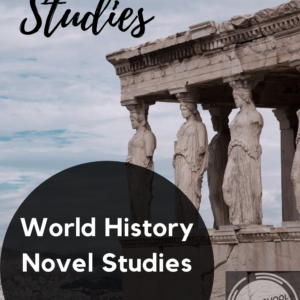Author G. K. Chesterton wrote, “Fairy tales do not tell children the dragons exist. Children already know that dragons exist. Fairy tales tell children the dragons can be killed.”
Stories and myths have shaped and reflected world cultures for millennia. They tell of how the world was created, how humans relate to the world, and how humans relate to each other. They are ingrained into our cultures, and as children we listen to these tales or read folklore, learning more about our own world and the cultures of others around us.
In spite of the development of societies all around the world, often independently of each other, there are many common threads that run through these tales. Throughout all world mythologies and cultural stories, there are common threads of birth, death, the afterlife, good and evil, and the origin of both man and the world itself. Younger children learn of these stories in fairy tales, which tend to be watered down to their level. Older children may delve into an occasionally very dark world of these dragons…but these myths show that the world’s dragons can be slain.
If you’re interested in incorporating world cultures and mythologies into your homeschool, here are some resources to guide you…
Get Started
- Epic Heroes / Introduction to Themes
- Notebooking Pages (great for any subject)
- Cultural Diversity Booklist
Online / Tech-Based Unit Studies
Resource Books
- Introduction to World Mythology for Kids
- This collection of mythology for kids takes you from ancient Mesopotamia to the Abenaki tribes of the Native Northeastern US and Canada, showing you myths from around the world. From the Japanese myth of Momotarō The Peach Boy and his loyal animal friends to the Slavic myth of Vasilisa the Wise and her enchanted doll, this beautifully illustrated collection of mythology for kids takes you on a journey through the sands of time. You’ll explore diverse cultures across the globe through the incredible tales of gods and goddesses, earth-shattering giants, mighty dragons, magical lakes, and more.
- Myths & Legends: 25 Projects to Build
- Through hands-on projects and exciting stories, this title in the Build It Yourself series aims to ignite young people’s curiosity in multicultural mythology and legends. Each chapter, which focuses on the Middle East, Europe, Africa, Asia, Australia, or the Americas, provides a succinct introduction to major themes and characters in a culture’s mythology, a glossary, short retellings, and more historical and cultural background, followed by easily assembled projects, as in the section on Sub-Saharan Africa, which presents instructions for making Ashanti Adinkra cloth and a Bata thunder drum. The gray-toned format, featuring spot illustrations, is lackluster, and a few of the projects, particularly the Hopi kachina doll, reference sacred objects that shouldn’t be designated as crafts. With proper context and discussion, though, this title offers solid, interactive opportunities to explore world mythology.
World Mythology Unit / Book Studies
- African Mythology – Mansa Musa
- African-American Folklore – Tristan Strong
- Celtic Mythology – Midsummer Night’s Dream
- Chinese Mythology – Where the Mountain Meets the Moon
- Egyptian Mythology – The Kane Chronicles
- Greek Mythology – Percy Jackson
- Hawaiian Mythology – Call it Courage
- Indian Mythology – Aru Shah
- Korean Mythology – The Dragon Pearl
- Mayan Mythology – The Storm Runner
- Mesopotamian Mythology – The Golden Bull
- Native American Mythology – Legends of the Southwest
- Navajo Mythology – Race to the Sun
- Norse Mythology – Magnus Chase
- Roman Mythology – Heroes of Olympus
- Spanish Mythology – Charlie Hernandez
.jpg)



